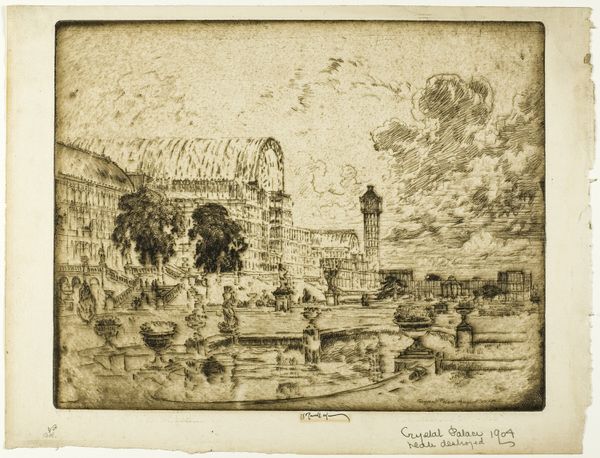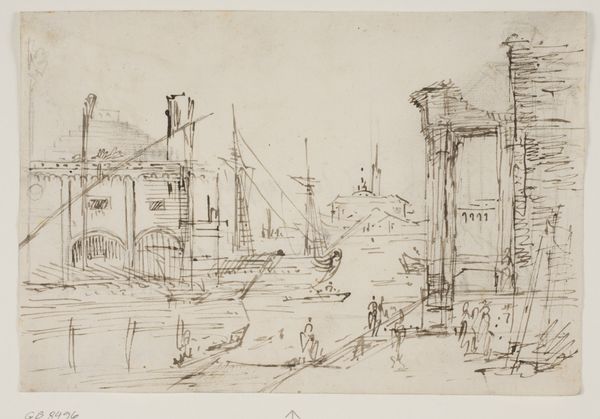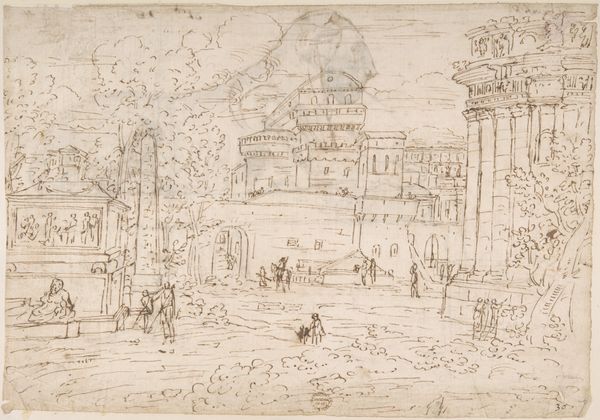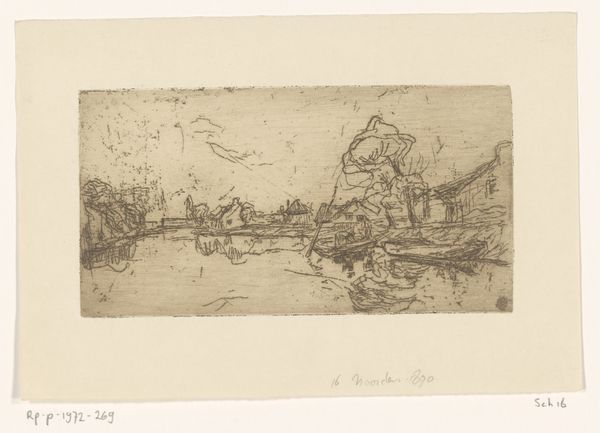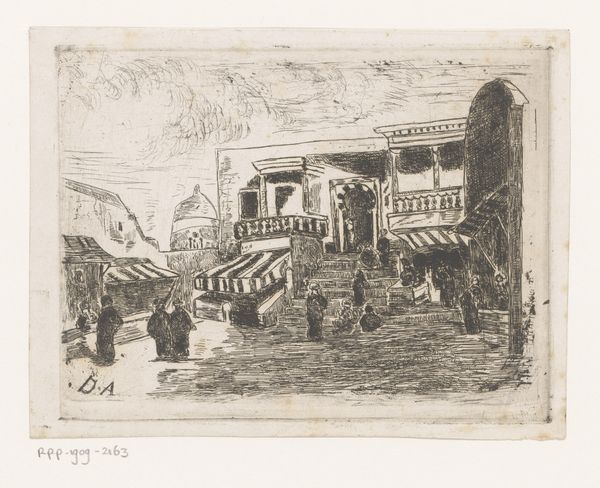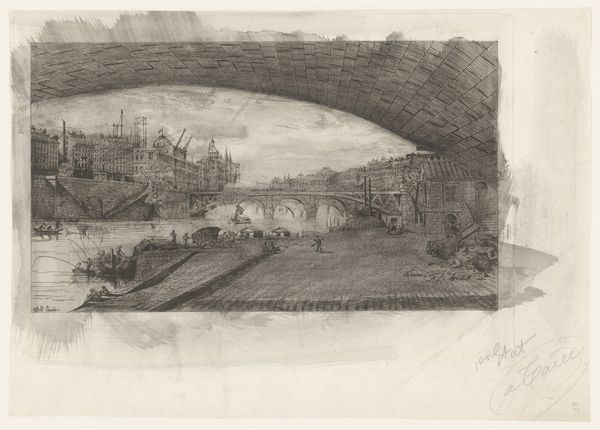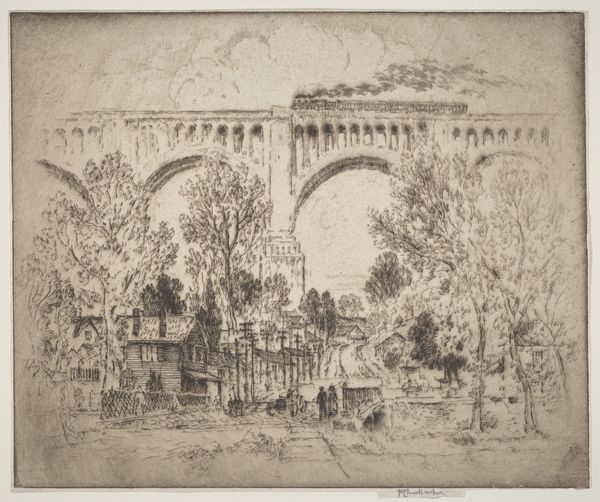
Copyright: National Gallery of Art: CC0 1.0
Editor: Here we have Joseph Pennell's etching, "The Crystal Palace," from 1905. The hazy lines give it an almost dreamlike quality, a fleeting impression of this architectural marvel. What social or political context shaped how Pennell chose to portray this landmark? Curator: Well, the Crystal Palace was originally erected for the Great Exhibition of 1851, a symbol of Victorian ambition, industrial progress, and British Imperial power. Pennell’s depiction comes later, after it had been moved to Sydenham. By the early 20th century, the Palace had somewhat lost its luster. Do you notice any signifiers in the image that may suggest commentary about its prominence within the British Empire in this etching? Editor: Now that you mention it, there's an element of... distance. It's not quite romanticizing the Palace; there's a stark, almost ghostly presence in the architecture itself and the empty space around it, as if Pennell wasn't aiming for idealization but to document what had already become a landmark and, soon, would become something else altogether. Curator: Precisely. Pennell was very interested in how public perception shaped the experience of art. Consider how printmaking, as a medium, makes this image so reproducible for different audiences, reflecting, or even shaping, popular understanding and attitudes towards the Palace in its twilight years as it transitioned from a hub of progress into what was closer to a Victorian relic, ripe for its eventual fate as ashes from the fire of 1936. What are your final thoughts? Editor: I never thought of Pennell as making such a bold comment through such an understated impression, however that reading definitely shifted my perspective. Curator: Indeed, and seeing the interplay of medium, subject, and reception is crucial. We can definitely read a great deal into it regarding its function, even in an almost obsolete capacity.
Comments
No comments
Be the first to comment and join the conversation on the ultimate creative platform.
